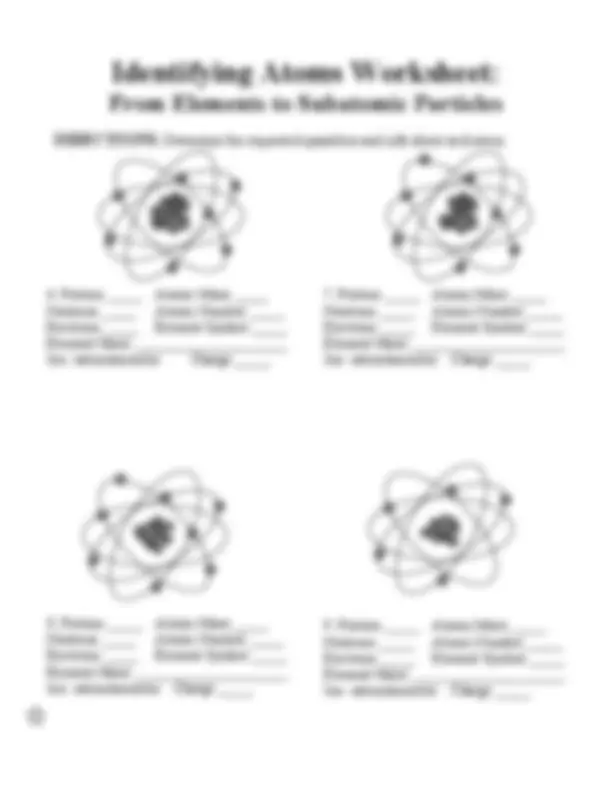



Study with the several resources on Docsity

Earn points by helping other students or get them with a premium plan


Prepare for your exams
Study with the several resources on Docsity

Earn points to download
Earn points by helping other students or get them with a premium plan
Community
Ask the community for help and clear up your study doubts
Discover the best universities in your country according to Docsity users
Free resources
Download our free guides on studying techniques, anxiety management strategies, and thesis advice from Docsity tutors
The parts of an atom are protons, electrons, and neutrons. A proton is positively charged and is located in the center or nucleus of the atom. All atoms of the ...
Typology: Study notes
1 / 2

This page cannot be seen from the preview
Don't miss anything!


Atoms and Their Parts (Subatomic Particles)
Substances that contain only one kind of atom are called elements. Some familiar elements are oxygen, gold, silver, and helium. An atom is the smallest part of an element that can be broken down and still have the characteristics of that element. All atoms have the same basic structure.
With the exception of hydrogen, all the atoms have three main parts. The parts of an atom are protons, electrons, and neutrons. A proton is positively charged and is located in the center or nucleus of the atom. All atoms of the same element have the same number of protons. The number of protons in the nucleus is call the atomic number and again, is unique to each element. A different number of protons would mean you have a different element. Electrons are negatively charged and are located in shells or orbits spinning around the nucleus. The number of protons and electrons can be equal. This equality is important so that the atom is neither positively nor negatively charged. It is said to be neutral. The third part of an atom is the neutron. Neutrons are neither positive nor negative and are located in the center of the nucleus of an atom along with the protons. Protons and neutrons are the massive parts of an atom. Their combined masses are called the atomic mass of an element. Electrons are so light that we say they have essentially no mass.
After reading the above, use the table below to help you understand the basics about protons, electrons, and neutrons.
Subatomic Particle Mass Charge Where Found Yes No Positive Negative Neutral Inside Nucleus Outside Nucleus
Proton
Electron
Neutron
Study the drawings and answer the questions at the bottom of the page.
Atom A Atom B
…
…
… …
… …
…
…
…
Legend:
Proton
Neutron
Electron
…
…
… …
… …
…
…
… …
… …
… …
…
…
…
…
…
… …
… …
… …
… …